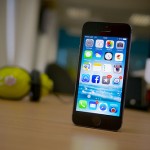How the Evolution of Wireless Technology Will Shape the Smartphones of the Future
Today I want to talk about how the wireless technology of the future will shape the design of smartphones. I think that most of you still remember those old smartphones of the 1990’s with all those bulky antennas, back in those days people used to have those old Nokia phones that are now obsolete.
The size of the antenna really depends on the GSM standard of the smartphone, most antennas were so big that they had to be designed on the outer shell of the phone.
The evolution of the GSM standard
GSM technology started to really evolve in the beginning of the 1990’s, the first GSM phones were bulky and the battery life was pretty much a disaster.
In the middle of the 1990’s mobile devices were introduced to data plans that included mobile traffic in the form of SMS.
The SMS changed the entire purpose of the phone and as it now became a more versatile communication device.
As you already know the GSM is a global standard, but as the technology evolved, these antennas became increasingly smaller and easy to conceal inside the body of the phone.
There was a slight shift in design, with a massive migration towards 3G technology in the early 2000’s. 3G technology was the first
The Sharp SH-04 was the first camera phone in the world
kind to introduce data transfer speeds as 10 times as high as 2G.
This was a natural evolution as phones became increasingly colourful and vibrant in colour, the first camera phone was just introduced in Japan and users were quite active in consuming large amounts of mobile data, this will later introduce the I-mode.
The long forgotten war between I-mode and WAP
The story of I-mode is rather romantic. Born in a period of despair for NTT DoCoMo, this mobile data service was revolutionary for its time.
The brain behind I-mode is Takeshi Natsuno, at that time he was a young Wharton graduate with an innovative mind, he was the Steve Jobs of Japan, and as a personal note I think that he did a marvellous job for that time.
This had to do because of several cultural factors and because of this factors I-mode never really made it out of Japan.
Japan’s broadband internet network was pretty much a disaster when compared to Europe and the U.S. this is why most people have started to use their mobile phones to access the internet, the streets of Tokyo were teeming with teenagers equipped with clamshell phones, I-mode ready.
Because of the above mentioned factors and because there were no cheap handsets in Europe to propel I-mode further, the service flaunted really bad in the rest of the world.
I still remember the prices of the I-mode equipped Nokia’s and they were quite expensive, on the other hand the Japanese were producing devices as cheap as 100$ or 80$ that were basically I-mode devices that lacked other features such as a camera.
The GSM 4G standard
The GSM 4G standard is the first to provide mobile data at a rate of 100%, this means that this service is focused mainly on mobile data. Keep in mind that 3G was nothing but a combination of data and voice but 4G is different, its main focus is on providing high speed data transfers for mobile devices.
The 4G standard is quite complex and there were some epic battles here as well, the most memorable was between 4G WIMAX and 4G LTE, the battle is not over yet as both of these technologies are quite similar in performance and because of the global trade the future of LTE is still uncertain, however most carriers in the U.S. have now adopted 4G LTE as a standard.
